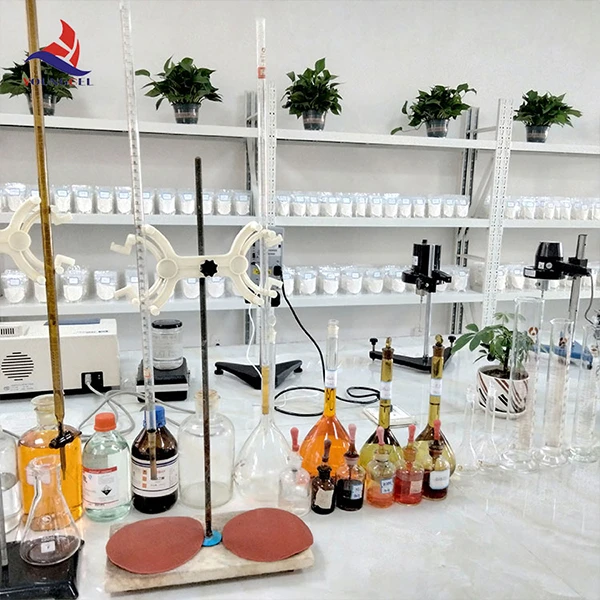The Role and Impact of HPMC in Various Industries
Hydroxypropyl Methylcellulose (HPMC) is a versatile and widely utilized cellulose derivative that plays a significant role across multiple industries. Known for its unique properties, HPMC is a non-ionic, water-soluble polymer derived from cellulose, which provides a range of functional benefits. This article explores the various applications of HPMC in industries such as pharmaceuticals, food production, construction, and personal care.
Pharmaceuticals
In the pharmaceutical industry, HPMC serves as an essential excipient in drug formulations. It is invaluable in the manufacture of tablets, capsules, and other dosage forms. HPMC is primarily used as a binder, helping to hold the ingredients together and improve the mechanical strength of tablets. Its gel-forming ability also makes it a critical component in controlled-release formulations, enabling the controlled release of active pharmaceutical ingredients (APIs) over extended periods. Moreover, HPMC is utilized as a thickening agent in liquid formulations, enhancing viscosity and stability, which is crucial for ensuring uniform distribution of the active ingredients in solutions and suspensions.
Food Industry
In the food sector, HPMC is recognized for its emulsifying and thickening properties, contributing to the texture and consistency of various products. It is commonly used in baked goods, sauces, dressings, and dairy products. The ability of HPMC to retain moisture makes it an ideal ingredient for improving the shelf life and freshness of food items. Additionally, due to its plant-derived nature, HPMC is suitable for vegetarian and vegan formulations, providing an alternative to traditional gelatin and other animal-based additives. Its functionality extends to acting as a fat replacer, allowing for reduced fat content in formulations without compromising taste or texture.
industri hpmc

Construction Industry
HPMC is extensively employed in the construction industry, where it functions as a vital additive in cement-based products such as mortars, plasters, and tile adhesives. Its water retention properties improve the workability of these materials, making them easier to apply. In addition, HPMC slows down the drying process, allowing for extended working times and improved adhesion. The incorporation of HPMC can also enhance the mechanical properties of the final products, ensuring better performance and durability. As the construction industry increasingly focuses on sustainable practices, HPMC's role in facilitating the use of eco-friendly materials is becoming more prominent.
Personal Care and Cosmetics
The personal care and cosmetics industries leverage HPMC for its thickening, film-forming, and stabilizing properties. It is often found in shampoos, conditioners, lotions, creams, and makeup products. In hair care formulations, HPMC provides a smooth and consistent texture, enhancing the application experience. Its film-forming ability is utilized to improve the wear time of cosmetic products, ensuring longer-lasting effects. The versatility of HPMC allows for its use in a wide variety of formulations, catering to diverse consumer preferences and needs.
Conclusion
The multifaceted applications of Hydroxypropyl Methylcellulose across various industries underscore its importance as a functional ingredient. From pharmaceuticals to food, construction, and personal care, HPMC enriches product formulations with its unique properties. As industries continue to evolve and seek innovative solutions, HPMC is poised to remain a critical component in the development of sustainable and effective products. The ongoing research and advancements in the properties and applications of HPMC may yield even more opportunities, reinforcing its position as an indispensable asset in modern manufacturing and formulation processes.
-
Rdp Powder: Key Considerations for Wholesalers in the Building Materials IndustryNewsJul.08,2025
-
Key Considerations for Wholesalers: Navigating the World of Hpmc - Based ProductsNewsJul.08,2025
-
Hpmc Detergent: Key Considerations for WholesalersNewsJul.08,2025
-
Key Considerations for Wholesalers: China Hpmc For Tile Adhesive, Coating Additives, Concrete Additives, and MoreNewsJul.08,2025
-
Crucial Considerations for Wholesalers: Navigating the World of Construction MaterialsNewsJul.08,2025
-
Key Considerations for Wholesalers Sourcing Additive For Cement, Additive For Concrete, Additive For Putty from Additive Manufacturer Shijiazhuang Gaocheng District Yongfeng Cellulose Co., Ltd.NewsJul.08,2025




